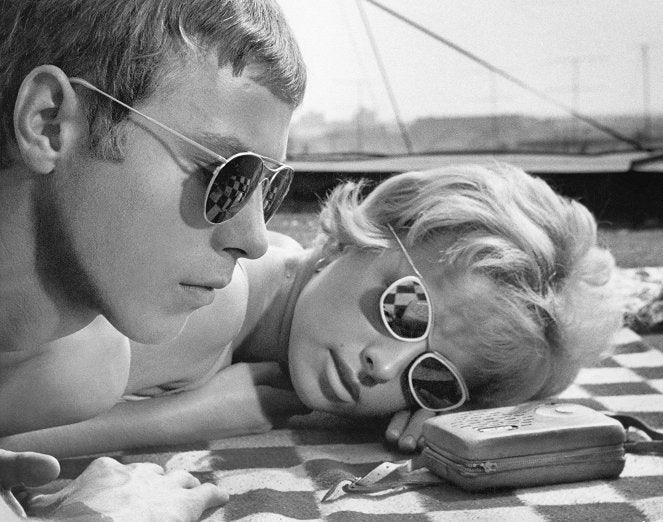The Sun in a Net (Slnko v sieti), directed by Štefan Uher, is a pioneering work of Slovak cinema that marked a turning point in Czechoslovak film history, signaling the beginning of the Czechoslovak New Wave. This 1962 film masterfully blends poetic realism with a unique narrative style, capturing the essence of everyday life and the inner emotional worlds of its characters. The story revolves around three interconnected themes: the uncertain first love between Fajolo and Bela, the purity of nature embodied by an old fisherman waiting with his nets in the Danube, and the hypocrisy at a hay-making brigade where deceit and political propaganda prevail.  Uher’s innovative approach breaks away from conventional storytelling by using fragmented narrative techniques and a focus on visual expression. The film’s tension is built not through external dramatics but through subtle internal contrasts—calm versus chaos, silence versus sound, and everyday life versus deeper, unspoken emotions. This stylistic choice emphasizes the poetic, capturing the beauty and pain of genuine feelings and the complexities of human existence.
Uher’s innovative approach breaks away from conventional storytelling by using fragmented narrative techniques and a focus on visual expression. The film’s tension is built not through external dramatics but through subtle internal contrasts—calm versus chaos, silence versus sound, and everyday life versus deeper, unspoken emotions. This stylistic choice emphasizes the poetic, capturing the beauty and pain of genuine feelings and the complexities of human existence.  The film also contrasts urban and rural settings, highlighting the differences in lifestyle and emotional landscapes. While Bela remains in the city, Fajolo leaves for the countryside, where his solitude leads to deeper self-reflection. Upon his return, Fajolo confronts unsettling changes and harsh realities, symbolized by the drying Danube bay and the death of the fisherman. The minimalistic dialogue and stunning visual compositions invite the viewer to find meaning beneath the surface, making each scene a reflection of life's ambiguities.
The film also contrasts urban and rural settings, highlighting the differences in lifestyle and emotional landscapes. While Bela remains in the city, Fajolo leaves for the countryside, where his solitude leads to deeper self-reflection. Upon his return, Fajolo confronts unsettling changes and harsh realities, symbolized by the drying Danube bay and the death of the fisherman. The minimalistic dialogue and stunning visual compositions invite the viewer to find meaning beneath the surface, making each scene a reflection of life's ambiguities.  The Sun in a Net is celebrated not just for its storytelling but also for its evocative atmosphere, captured through Szomolányi’s exquisite cinematography, which plays with light, shadow, and depth of field. The simple yet haunting musical score, coupled with the natural sounds of daily life, enhances the film’s mood, creating an intimate and authentic portrayal of 1960s Slovakia. This cinematic gem offers a timeless exploration of youth, freedom, and the search for identity, making it a cornerstone of Slovak and Czechoslovak cinema.
The Sun in a Net is celebrated not just for its storytelling but also for its evocative atmosphere, captured through Szomolányi’s exquisite cinematography, which plays with light, shadow, and depth of field. The simple yet haunting musical score, coupled with the natural sounds of daily life, enhances the film’s mood, creating an intimate and authentic portrayal of 1960s Slovakia. This cinematic gem offers a timeless exploration of youth, freedom, and the search for identity, making it a cornerstone of Slovak and Czechoslovak cinema.
The Sun in a Net: A Landmark of Slovak Cinema











